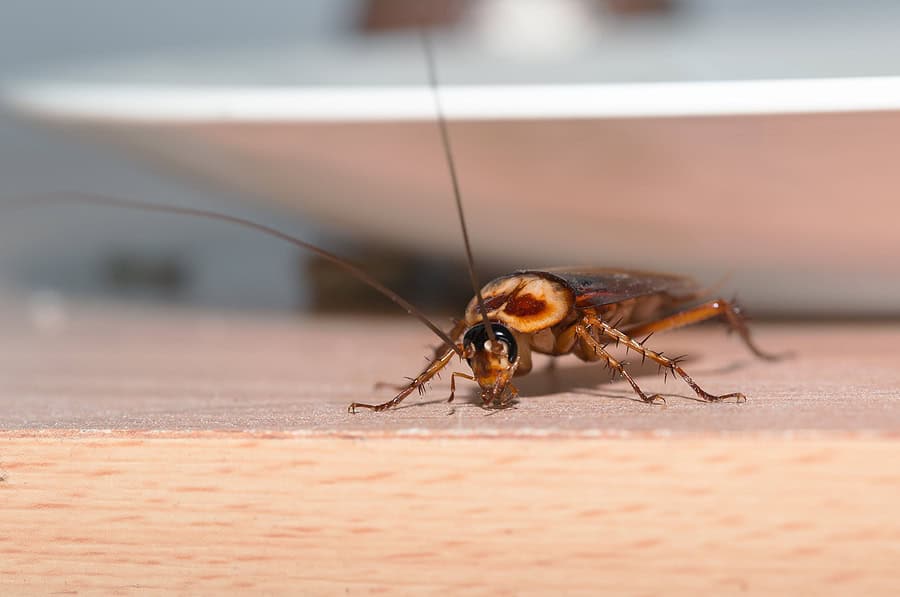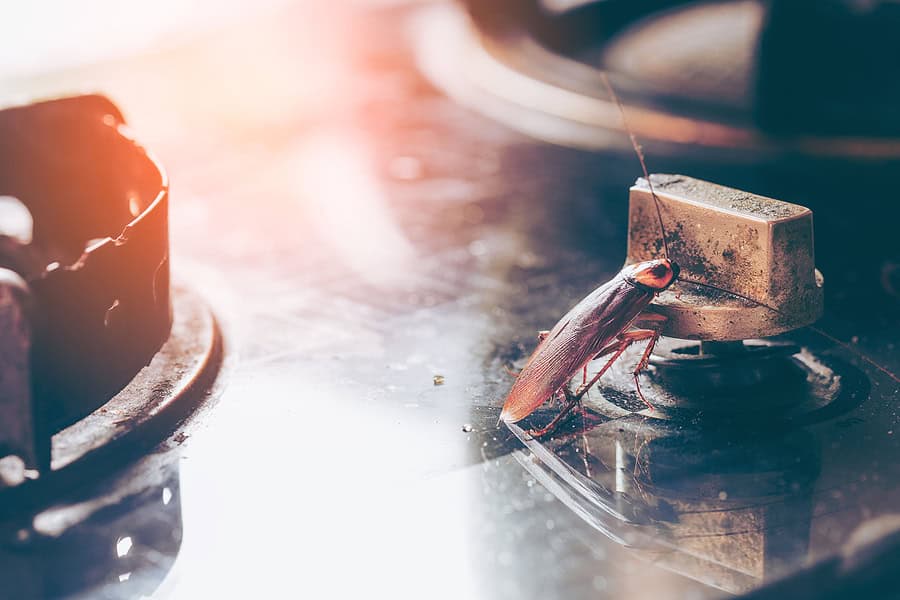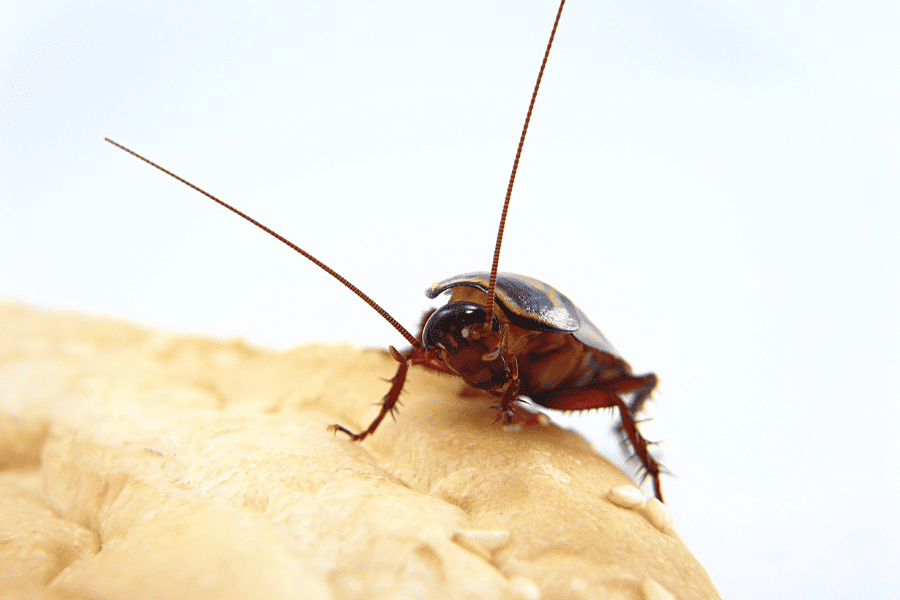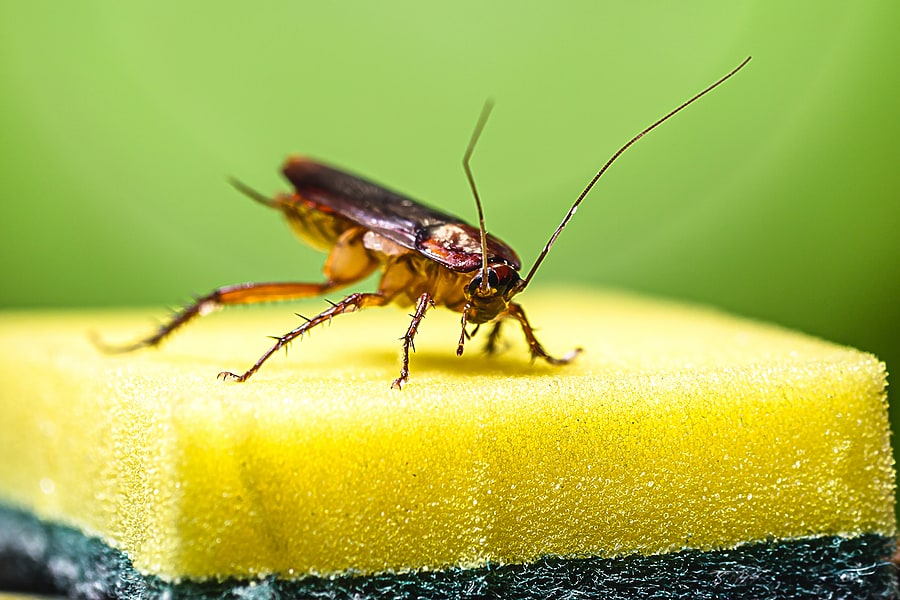READY TO GET STARTED?
REQUEST A FREE ESTIMATE
Fill out the form below or call (888) 466-7849 for a free, no-obligation estimate.

Cockroaches are resilient pests that thrive in Miami’s warm and humid climate. Understanding the types of roaches in Miami and what attracts them can help residents manage these unwelcome guests effectively.
Roaches are a common nuisance in Miami, thriving in both urban and natural environments. The city’s mix of heat and moisture creates perfect breeding conditions, making awareness and proactive management essential.
Understanding their habits is crucial for homeowners. Roaches are nocturnal, which means they’re more active at night, making them harder to spot during the day. Regular inspections of your home can help catch an infestation early. Look for droppings, egg cases, and the musty odor they often leave behind.
By staying vigilant and implementing preventive measures, such as sealing entry points and maintaining cleanliness, you can significantly reduce the likelihood of a roach invasion.
The tropical climate and abundant food sources contribute to Miami’s roach problem. With plenty of hiding spots and easy access to water, cockroaches find ideal living conditions in kitchens, bathrooms, and cluttered areas.
Additionally, the warmth and humidity of the region create a year-round haven for these pests, making it crucial for homeowners to stay proactive. By maintaining a clean and organized environment, you can significantly reduce the chances of attracting these unwelcome pets into your home.
Roaches carry bacteria such as Salmonella and E. coli, which can contaminate food and surfaces. They also produce allergens that can trigger asthma and allergies, particularly in sensitive individuals. The presence of these pests not only poses health risks but can also lead to increased anxiety for homeowners, as the thought of sharing space with roaches is unsettling.
Additionally, roaches can reproduce rapidly, turning a small problem into a significant infestation in a short time. Their ability to squeeze through tiny cracks and crevices means that they can easily invade homes, making early detection and prevention even more crucial. By maintaining a clean environment and addressing any signs of an infestation promptly, you can help protect your family’s health and ensure a more comfortable living space.
Sanitation: Keeping kitchens and bathrooms clean is crucial in deterring roaches. Wipe down surfaces regularly, ensuring that crumbs and spills are promptly cleaned. Store food in airtight containers to prevent access, and don’t forget to seal pet food as well. Regularly empty trash bins, ideally daily, and ensure that garbage is stored in sealed containers. This minimizes the attractive scents that can draw roaches into your home.
Seal Entry Points: Roaches are experts at squeezing through the tiniest of openings. Use caulk to close gaps and cracks around windows, doors, and the foundation of your home. Pay special attention to areas where plumbing and electrical lines enter the building, as these can often be overlooked but serve as highways for pests. Installing door sweeps can also help roaches and other household pests
Reduce Clutter: A tidy environment is less inviting to roaches. Declutter your living spaces, especially basements, attics, and storage areas where boxes and unused items can create cozy hiding spots. Keep items off the floor and use clear bins for storage, allowing you to quickly spot any signs of an infestation. Regularly checking and organizing these areas not only keeps your home looking great but also helps you stay one step ahead of any potential roach issues.
Using traps, baits, and insecticidal sprays can help manage infestations, but hiring professional pest control is often the most effective solution. Pest experts in Miami understand the unique challenges posed by the local climate and can address infestations comprehensively and quickly.
Roaches are a persistent challenge for homeowners, especially given the city’s warm, humid environment that fosters their growth. However, with proactive measures and professional help, they can be managed effectively. Stay vigilant and maintain cleanliness to keep your home roach-free. If you encounter a roach problem, don’t hesitate to reach out to local pest control experts for tailored solutions for your roach problem. With the right approach, you can reclaim your space from these unwelcome intruders.

Moving to a new home is an exciting chapter, but it’s also a prime opportunity for pests—especially cockroaches—to sneak into your life and make themselves at home in your boxes, furniture, and other belongings. Roaches are resilient pests that thrive in small, dark hiding spots and can easily hitchhike from one location to another. Here’s a guide on how to prevent these unwanted guests from joining you on your move, along with general tips to keep roaches out of your new home.
To effectively prevent roaches from moving with you, it’s helpful to understand their habits and needs. Roaches are particularly drawn to food sources and areas that provide moisture and shelter.
Roaches are omnivores and can consume a wide range of organic materials. They are particularly drawn to leftover food, grease, crumbs, and even pet food. Cockroaches also eat paper, cardboard, and certain fabrics, making moving boxes and stored items potential attractions.
Some cockroach species, like the American cockroach, are capable of limited flying, though they prefer to crawl. Knowing whether roaches can fly helps you understand how they spread and why securing all your belongings is essential when moving.
Here are the best practices to follow before and during your move to prevent roaches from taking up residence in your belongings.
Roaches often hide in appliances, furniture, and dark, undisturbed places. Start by cleaning each item thoroughly. Wipe down surfaces, vacuum cracks and crevices, and check for any signs of cockroaches, such as egg casings, droppings, or shed skins. Focus on items stored in basements, kitchens, and closets, as these areas are common hiding spots for roaches.
When packing, use new, sturdy boxes if possible, as reused boxes can harbor roach eggs and larvae. Place items in plastic bags before putting them in boxes to add an extra layer of protection. Once packed, seal boxes securely with packing tape to keep pests out.
If you must transport food items, make sure they’re in airtight containers to avoid attracting roaches. However, it’s often best to avoid moving food altogether, as even small crumbs or residue can attract pests.
While it can be tempting to pick up free boxes from stores or friends, reused boxes are often stored in garages or basements where roaches are common. Opt for new boxes whenever possible, and recycle any boxes you don’t need.
Appliances like microwaves, toasters, and refrigerators can harbor food particles and moisture that attract roaches. Clean them thoroughly before packing, and check all crevices where roaches might hide. Consider wrapping appliances in plastic bags to contain any pests that may escape detection.
Once you arrive at your new home, there are key steps you can take to prevent any hidden pests from settling in.
Before bringing boxes directly into your new home, inspect them for any roaches or other pests. Unpack items outside if possible, and wipe down each item before placing it inside. Dispose of packing materials immediately to prevent them from using them as hiding spots.
Even if your new home appears spotless, roaches could still be hiding in cracks, crevices, and dark corners. Vacuum carpets, mop hard floors, and wipe down all surfaces. Pay special attention to kitchens and bathrooms, as these areas often provide food and moisture sources that attract cockroaches.
Roaches can enter through tiny openings in walls, windows, and baseboards. Use caulk to seal any gaps around plumbing, electrical outlets, windows, and doors. Sealing these entry points reduces the likelihood of roaches finding a way in.
Keeping roaches out of your new home requires ongoing vigilance and cleanliness. Here are some essential cockroach control tips to follow.
Roaches are constantly on the hunt for food and water. Clean up crumbs and spills immediately, and keep food in airtight containers. Pet food should be stored securely and not left out overnight. Fix any leaky faucets or pipes, as roaches are attracted to moisture and can survive for weeks on water alone.
Roaches thrive in cluttered environments where they can hide and breed. Keep storage areas tidy, minimize paper clutter, and avoid stacking cardboard boxes or newspapers. Regularly clean out cabinets and storage spaces to deter roaches from making these areas their homes.
Trash bins are a major attraction for roaches, especially if they contain food waste. Use trash cans with tight-fitting lids and take out the garbage frequently. Regularly clean the inside of the trash bin to remove any spills or residue.
Essential oils such as peppermint and tea tree oil are natural roach deterrents. You can dilute these oils with water and spray them in areas where roaches are likely to enter, such as under sinks, around trash cans, and in cupboards. While not a guaranteed solution, natural deterrents can help reduce cockroach activity.
Enlisting the help of a professional cockroach exterminator can be one of the most effective ways to keep roaches out. A pest control company can perform regular inspections, treat your home with preventive measures, and offer advice on further roach prevention steps. Professional treatments can be especially valuable in high-risk areas such as kitchens and bathrooms, where roaches are often drawn to food and water sources.
If you notice signs of cockroach infestations in your new home despite taking preventive measures, it may be time to call in a pest control professional. Roaches reproduce rapidly, and even a single sighting can indicate a larger problem. Look out for these signs of infestation:
A cockroach exterminator can assess the extent of the infestation and provide targeted treatment options to eliminate roaches and prevent them from returning.
Moving to a new home is a chance to start fresh, and taking steps to prevent roaches from tagging along is an important part of that process. By inspecting and cleaning items before packing, using quality packing materials, and practicing good hygiene in your new space, you can greatly reduce the risk of cockroach infestations. And for ongoing protection, consider enlisting the help of a pest control company that specializes in cockroach control and prevention. With these pro tips, you can enjoy a roach-free home and a peaceful start to your new journey.

Roaches are resistant and highly adaptable pests, skilled at finding their way indoors and multiplying quickly to create an infestation in your home! One of the best ways you can keep a roach-free home is implementing some effective DIY prevention measures! Let’s review the reasons roaches infest and the ways you can deter them from your home.
There are several, everyday factors that will attract roaches inside your home, including:
Roaches contaminate surfaces they touch and can trigger allergies and asthma, so stopping them before they even enter your home is important for the health of your family. Here are some easy, roach prevention tips that every Florida homeowner can utilize:
While prevention can help keep cockroaches away, sometimes it’s best to get professional help! Call a pest control company near you to inspect your home and provide you with the best treatment and prevention plan to make sure you have a roach-free home.

Cockroaches are one of the most common household pests that Florida residents will deal with. While these pests won’t cause structural damage, they can be a health risk to you and your family as they will transmit diseases and contaminate food. Spotting a roach inside your home doesn’t always mean your home is dirty, as roaches can easily get into the cleanest of homes to look for food, water, and shelter. One question homeowners often ask is “How can I stop roaches?” One of the best ways you can prevent them from entering your home is to understand how they can get inside in the first place and familiarize yourself with the cockroach prevention tips that you can utilize.
Roaches can be extremely resourceful when trying to enter homes. These small insects will flatten themselves to be able to crawl through the smallest holes and cracks leading inside a building, including openings around your foundation and utility pipes leading inside the home. Likewise, they will squeeze through any available openings around doors and windows, whether it’s gaps or if it’s been open too long. Roaches are known to hitchhike and lay their eggs on certain items to get inside the home, including luggage, backpacks, used furniture, used appliances, and packages.
One of the best ways you can stop roaches is to create an environment they aren’t attracted to that will deter them away. Check out our common roach preventative tips to consider:
Cockroaches are extremely resilient and once an infestation occurs, they can grow overnight! If you’ve noticed one too many roaches than you are comfortable with, contact a pest control company near you for a free evaluation and the recommended pest control treatment and prevention plan based on your current pest situation.

Roaches are common household pests that are highly resilient and difficult to eliminate. They reproduce quickly, making them hard to keep under control once an infestation has been established. Cockroaches will infest anywhere they can find an available supply of food, water, and shelter. They are commonly found in areas near food and moisture (kitchens and bathrooms). They are also prevalent in multiunit housing (apartments, condos, etc.). Once established in your home, roaches can cause serious health risks for you and your family. Here are some of the reasons roaches are dangerous to your health.
Roaches are known to carry at least 30 different types of bacteria including typhoid fever, cholera, dysentery, and poliomyelitis. They spread these diseases to humans by contaminating food and surfaces in our home. We can also inhale bacteria from the air near a cockroach infestation.
The allergens roaches carry can trigger asthma in those who are already afflicted with it. They are also known to cause asthma in those who didn’t previously have it. The incidence of allergic reactions can increase when roaches are present in the home. They are triggered by cockroach debris, including discarded shells, saliva, body parts, and feces. Their saliva is also known to cause skin rashes and sneezing.
Roaches can be found scavenging through the trash, dumpsters, on spoiled food, and even feces. They pick up contaminants from these surfaces as they crawl through them which stick to their legs and bodies and are then left behind as they crawl across our food and clean surfaces. When we eat food or touch surfaces that have been contaminated by roaches, it can cause sickness for us, as well.
Making your home less inviting to roaches is the first step in preventing them. Here are some cockroach prevention tips you can utilize in your home.
If you have a problem with roaches or other household pests, contact your local pest control company for an inspection.